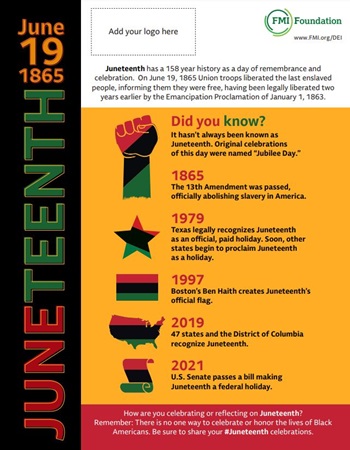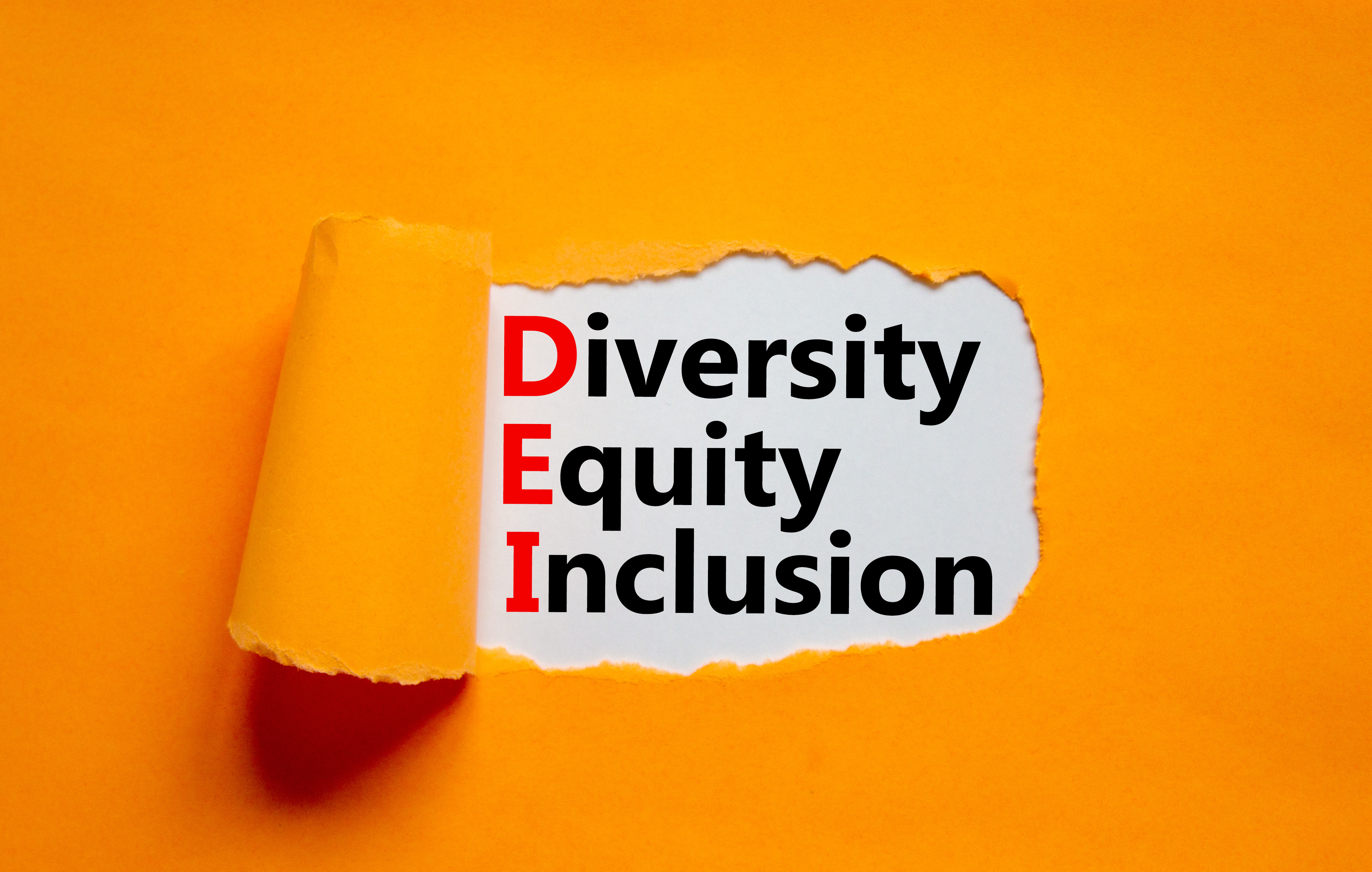By: David Fikes, Executive Director, FMI Foundation 
Juneteenth has a deep 158-year history as a celebrated commemoration of the ending of slavery in the United States. Like July Fourth, our other national holiday commemorating liberation, Juneteenth is a vivid stake driven into our national calendar reminding us that freedom declared does not always mean freedom immediately realized. We all may remember that July Fourth commemorates the signing of the Declaration of Independence, but we tend to forget that it would be almost another decade before American liberation would be acknowledged by the evacuation of British troops from U.S. soil.
Juneteenth, sometimes referred to as Black Independence Day, also bears the duality of being a celebration of freedom, but also a historic reminder that freedom does not come easily or quickly. A quick review of the original events that gave rise to Juneteenth certainly drives a deeper appreciation of the joy and the solemnity of this holiday.
President Abraham Lincoln’s Emancipation Proclamation officially went into effect on January 1, 1863, declaring freedom for all enslaved people held in Confederate states. Unfortunately, that proclamation did not result in all slaves being immediately released. Some two and a half years later, armed with the Thirteenth Amendment, which made emancipation a national policy, Union troops marched into Galveston Bay, Texas and on June 19, 1865, declared that the 250,000 enslaved black people in the state were free. The presence of the army meant that emancipation moved from words on paper and became a living reality for those still in bondage.
Informal celebrations commemorating that key event brought continued attention to the significance of June 19th with the ultimate result of Texas in 1980 becoming the first state to designate Juneteenth as a holiday. Other states began officially recognizing the significance of Juneteenth, adding to its greater recognition.
In 2021, the U.S. Senate passed a bill and on June 17th President Joe Biden signed the Juneteenth National Independence Day Act into law making it a federal holiday.
 As with most holidays, food plays a significant role in the festive celebration of Juneteenth with the barbeque pit often serving as a center-stage attraction. Other traditional foods are served so Juneteenth participants can recall the spirit and
share in the aromas and tastes that the originally emancipated would have experienced in their liberation celebrations.
As with most holidays, food plays a significant role in the festive celebration of Juneteenth with the barbeque pit often serving as a center-stage attraction. Other traditional foods are served so Juneteenth participants can recall the spirit and
share in the aromas and tastes that the originally emancipated would have experienced in their liberation celebrations.
In response to a request from the FMI Diversity, Equity, and Inclusion Committee, the FMI Foundation has created two Juneteenth infographics for FMI companies to download and customize sharing helpful and accessible information about the importance of Juneteenth. One infographic focuses on historical aspects of Juneteenth and the other highlights the foods traditionally served in Juneteenth celebrations.
These infographics can be customized with your company logo for sharing on your social media channels. We hope these resources help you and your customers commemorate this celebration of freedom in all its joy and solemnity.
Visit the DEI Webpage For More Resources
Additionally, the FMI Foundation is hosting a digital seminar on Wednesday, June 7 at 1 p.m. ET. addressing Two Sure-Fire Tools to DEI Success. Jackie Wong of McKinsey Group and DEI Consultant Jonathan Mayes will share their expertise regarding creating effective DEI training modules and leveraging employee resource groups for business success.


 Industry Topics address your specific area of expertise with resources, reports, events and more.
Industry Topics address your specific area of expertise with resources, reports, events and more.
 Our Research covers consumer behavior and retail operation benchmarks so you can make informed business decisions.
Our Research covers consumer behavior and retail operation benchmarks so you can make informed business decisions.
 Events and Education including online and in-person help you advance your food retail career.
Events and Education including online and in-person help you advance your food retail career.
 Food Safety training, resources and guidance that help you create a company food safety culture.
Food Safety training, resources and guidance that help you create a company food safety culture.
 Government Affairs work — federal and state — on the latest food industry policy, regulatory and legislative issues.
Government Affairs work — federal and state — on the latest food industry policy, regulatory and legislative issues.
 Get Involved. From industry awards to newsletters and committees, these resources help you take advantage of your membership.
Get Involved. From industry awards to newsletters and committees, these resources help you take advantage of your membership.
 Best practices, guidance documents, infographics, signage and more for the food industry on the COVID-19 pandemic.
Best practices, guidance documents, infographics, signage and more for the food industry on the COVID-19 pandemic.
